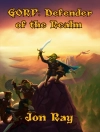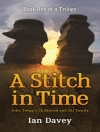This collection of Japanese fairy tales is the outcome of a suggestion made to me indirectly through a friend by Mr. Andrew Lang. They have been translated from the modern version written by Sadanami Sanjin. These stories are not literal translations, and though the Japanese story and all quaint Japanese expressions have been faithfully preserved, they have been told more with the view to interest young readers of the West than the technical student of folk-lore….
In telling these stories in English I have
followed my fancy in adding such touches of local color or
description as they seemed to need or as pleased me, and in one or
two instances I have gathered in an incident from another version. At
all times, among my friends, both young and old, English or American,
I have always found eager listeners to the beautiful legends and
fairy tales of Japan, and in telling them I have also found that they
were still unknown to the vast majority, and this has encouraged me
to write them for the children of the West.
Y. T. O.
Tokio, 1908.
LORD BAG OF RICE (Excerpt)
Long, long ago there lived, in Japan a brave
warrior known to all as Tawara Toda, or ‘My Lord Bag of Rice.’
His true name was Fujiwara Hidesato, and there is a very interesting
story of how he came to change his name.
One day he sallied forth in search of adventures,
for he had the nature of a warrior and could not bear to be idle. So
he buckled on his two swords, took his huge bow, much taller than
himself, in his hand, and slinging his quiver on his back started
out. He had not gone far when he came to the bridge of
Seta-no-Karashi spanning one end of the beautiful Lake Biwa. No
sooner had he set foot on the bridge than he saw lying right across
his path a huge serpent-dragon. Its body was so big that it looked
like the trunk of a large pine tree and it took up the whole width of
the bridge. One of its huge claws rested on the parapet of one side
of the bridge, while its tail lay right against the other. The
monster seemed to be asleep, and as it breathed, fire and smoke came
out of its nostrils.
At first Hidesato could not help feeling alarmed
at the sight of this horrible reptile lying in his path, for he must
either turn back or walk right over its body. He was a brave man,
however, and putting aside all fear went forward dauntlessly. Crunch,
crunch! he stepped now on the dragon’s body, now between its coils,
and without even one glance backward he went on his way.
He had only gone a few steps when he heard some
one calling him from behind. On turning back he was much surprised to
see that the monster dragon had entirely disappeared and in its place
was a strange-looking man, who was bowing most ceremoniously to the
ground. His red hair streamed over his shoulders and was surmounted
by a crown in the shape of a dragon’s head, and his sea-green dress
was patterned with shells. Hidesato knew at once that this was no
ordinary mortal and he wondered much at the strange occurrence. Where
had the dragon gone in such a short space of time? Or had it
transformed itself into this man, and what did the whole thing mean?
While these thoughts passed through his mind he had come up to the
man on the bridge and now addressed him:
‘Was it you that called me just now?’
‘Yes, it was I, ‘ answered the man: ‘I
have an earnest request to make to you. Do you think you can grant it
to me?’
‘If it is in my power to do so I will, ‘
answered Hidesato, ‘but first tell me who you are?’
‘I am the Dragon King of the Lake, and my
home is in these waters just under this bridge.’
‘And what is it you have to ask of me!’
said Hidesato.
‘I want you to kill my mortal enemy the
centipede, who lives on the mountain beyond, ‘ and the Dragon
King pointed to a high peak on the opposite shore of the lake…
Yei Theodora Ozaki (Eiko Seodora Ozaki, 1871 – December 28, 1932) was an early 20th-century translator of Japanese short stories and fairy tales. Her translations were fairly liberal but have been popular, and were reprinted several times after her death.
According to ‘A Biographical Sketch’ by Mrs. Hugh Fraser, included in the introductory material to Warriors of old Japan, and other stories,
Ozaki came from an unusual background. She was the daughter of Baron
Ozaki, one of the first Japanese men to study in the West, and Bathia
Catherine Morrison, daughter of William Morrison, one of their teachers.
Her parents separated after five years of marriage, and her mother
retained custody of their three daughters until they became teenagers.
At that time, Yei was sent to live in Japan with her father, which she
enjoyed. Later she refused an arranged marriage, left her father’s
house, and became a teacher and secretary to earn money. Over the years,
she traveled back and forth between Japan and Europe, as her employment
and family duties took her, and lived in places as diverse as Italy and
the drafty upper floor of a Buddhist temple.
All this time, her letters were frequently misdelivered to the unrelated Japanese politician Yukio Ozaki, and his to her. In 1904, they finally met, and soon married.












